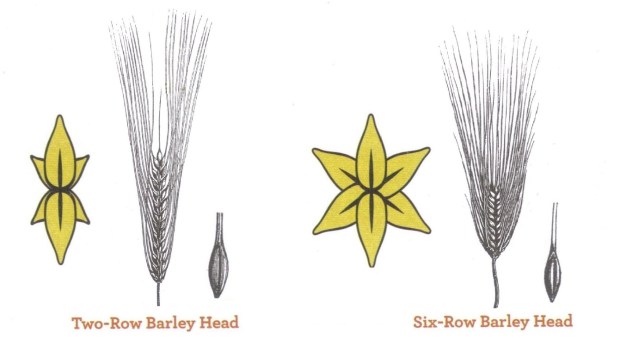FYI: When APA recipes call for "two-row" and specify nothing further, they probably refer to what is given that name in the US, an ale malt with a less forward flavour than the English ale malts.
Not entirely true. There are both US and UK (and european) 2 row malts with different flavour profiles.
2 row barley is more common than 6 row barley (which is only grown in the US), with 2 row the main type of malting barley used in europe. Pilsner malt, ale malt, golden promise, crystal, carapils, chocolate malt, vienna, Munich, biscuit, victory and roast barley (to name a few) are all from 2 row barley.
It refers to the orientation of kernels on the stalk. When you look down the stalk of a 2 row cultivar there are (funnily enough) 2 rows of kernels, which lie on opposite sides of the stalk. With 6 row barley they are arranged more like a star around the stalk (with 6 kernels) - see image below.
As for the difference between the 2: 2 row generally has more carbohydrate which results in more fermentables and more "malt flavour", while 6 row has more enzymes and protein per kernel. It was more commonly used in the US for brewing in the early days, which makes sense, as the US brewing industry typically had higher use of adjuncts (corn etc), so malt with more enzymes (i.e. 6 row) was better able to convert those adjuncts with low diastatic power. Probably less of an issue these days, as most modern 2 row malts have been developed to have high enzyme content (and hence diastatic power) and are more readily able to convert carbohydrates in adjuncts to CO2 and ETHOH.
I've never had beer made from 6 row, but I've read it doesn't give as clean a flavour and lack the malt backbone of the same beer made from 2 row.
JD





